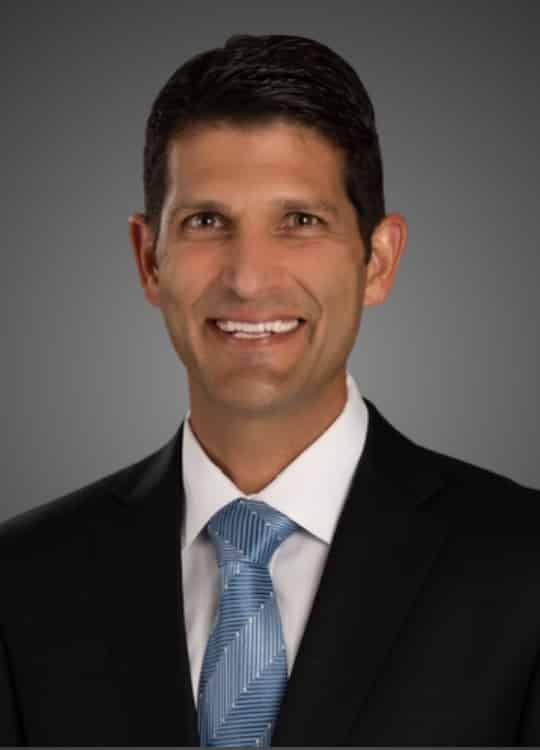Are you suffering from symptoms of Trigger Finger?
The Omaha Hand & Wrist Specialists at MD West ONE can properly diagnose and treat Trigger Finger through surgical and non-surgical treatments. If you have the following symptoms, you may want to make an appointment with one of our Board Certified Specialists.
- Pain and irritation when moving the finger from bent to straight
- Tenderness at the base of the finger or thumb
- Excessive pain in the morning that decreases through the day
- A bump at the bottom of the finger, near the palm
- A locking sensation or popping sound with finger movement
- A stiff, immovable bent finger
- Heat in the affected area caused by infection
Meet MD West ONE's hand specialists and learn more about how they treat Trigger Finger.
Trigger Finger, Surgical Alternatives, and Surgical option(s)
What is Trigger Finger?
Trigger finger — also known as trigger digit or stenosing tenosynovitis — most commonly affects the thumb and ring finger. People with trigger finger experience digits that stiffen and pop when the fingers bend. Patients of all ages, even newborns, can experience symptoms of trigger finger, but the condition becomes more common with age and in people with diabetes.
Perhaps, the most noticeable symptom of trigger finger occurs when the finger remains in a bent position. This fixed position starts with inflammation in the tendon sheath (a tunnel protecting the movement of the tendon). The sheath obstructs the tendons and pulleys from moving the fingers when inflamed.
Occasionally, the flexor tendons responsible for finger movement experience swelling as well. The finger may even develop a small nodule or noticeable bump. If the fingers seem obstructed by this type of swelling, popping, pain, and limitations in movement often occur.
Are there any non-surgical treatments?
Treatment for trigger finger can vary based on the significance of the condition. In most cases, rest and medication lessen the swelling and restore the finger's range of motion. However, some severe cases require surgery.
In less severe cases of trigger finger, patients undergo a few simple methods of treatment to repair their swollen tendons.
-
Rest - alleviating the swollen tendons from movements that cause pain or swelling for an extended time
-
Medication - NSAIDs (non-steroidal anti-inflammatory drugs) such as acetaminophen help to decrease the swelling and pain
-
Splinting - using a split to hold the finger straight and still while sleeping
-
Physical therapy - simple exercises to relieve stiffness in the finger
-
Steroid Injections - if symptoms persist, 1-2 steroid injections may reduce the swelling and heal the finger
What if the non-surgical options do not work for me?
If the conservative measures fail for a trigger finger, there are a couple of surgical options. These have evolved over the last several years. Surgeons have the preference depending on their experience and training. Currently we utilize two types of surgical therapies.
In-office ultrasound guided percutaneous trigger finger release:
A percutaneous trigger finger release has been utilized by hand surgeons for many years. Recently with the integration with ultrasound into our offices we believe this can be done safer and with direct visualization of the surgical equipment. This ultrasound visualization, we believe, helps minimize trauma to the soft tissues during a trigger finger release. This procedure is done in the office under local anesthesia. We usually schedule a little extra time in our office to do these. At the time of this procedure, we will localize adjacent nerves and arteries as well as the midline of the tendon by ultrasound. With the use of local anesthesia, we will minimize the pain associated with the intervention. Standard surgical prep and draping will be performed. After adequate anesthesia is obtained, an 18 gauge needle is advanced under ultrasound guidance through the skin and down into the area of the A1 pulley. With the sharp edge of the needle, we are able to release the pulley. This technique is done advancing from distal to proximal and usually involves three and possibly four percutaneous placements of the needle. After care involves just a compressive hand dressing for 24 hours. Thereafter patients can return to functional use of the hand. There may be some postoperative swelling and soreness which may persist for one week or so.
Open surgical trigger finger release:
This procedure is done as an outpatient. It can be done under local and/or sedation anesthesia. At the time of the actual surgery after appropriate anesthesia is obtained, approximately a 1 cm incision is made in the palm over the area of the triggering (A1 pulley). The A1 pulley is released under direct vision. The tendons can be evaluated. The skin closure includes approximately three to four sutures. A bulky hand dressing is applied for one day or two. The sutures are left in for 10 days. Post procedure, one needs to do appropriate wound and suture care. One can return to light duty type activities and slowly progress as comfort allows. With postoperative rehabilitation, it is not necessary to wear splints and/or any type of casting. Work can be resumed with restrictions only as necessary for local discomfort. A home exercise stretching program is all that is necessary. Overall use of the hand can be advanced as comfort allows.
Don't wait any longer to get relief. Make an appointment to see one of our orthopedic specialists.
AMERICAN SOCIETY FOR SURGERY OF THE HAND
All of the hand surgeons in the practice are recognized members of the American Society for Surgery of the Hand. It is the oldest and most prestigious medical society dedicated to the hand and upper extremity. The mission of the society is to advance science and practice of hand and upper extremity surgery through education, research, and advocacy on behalf of patients and practitioners. These physicians dedicate their time and energy to improving the patient experience and their knowledge in their field. For more information, visit the American Society for Surgery of the Hand website.




